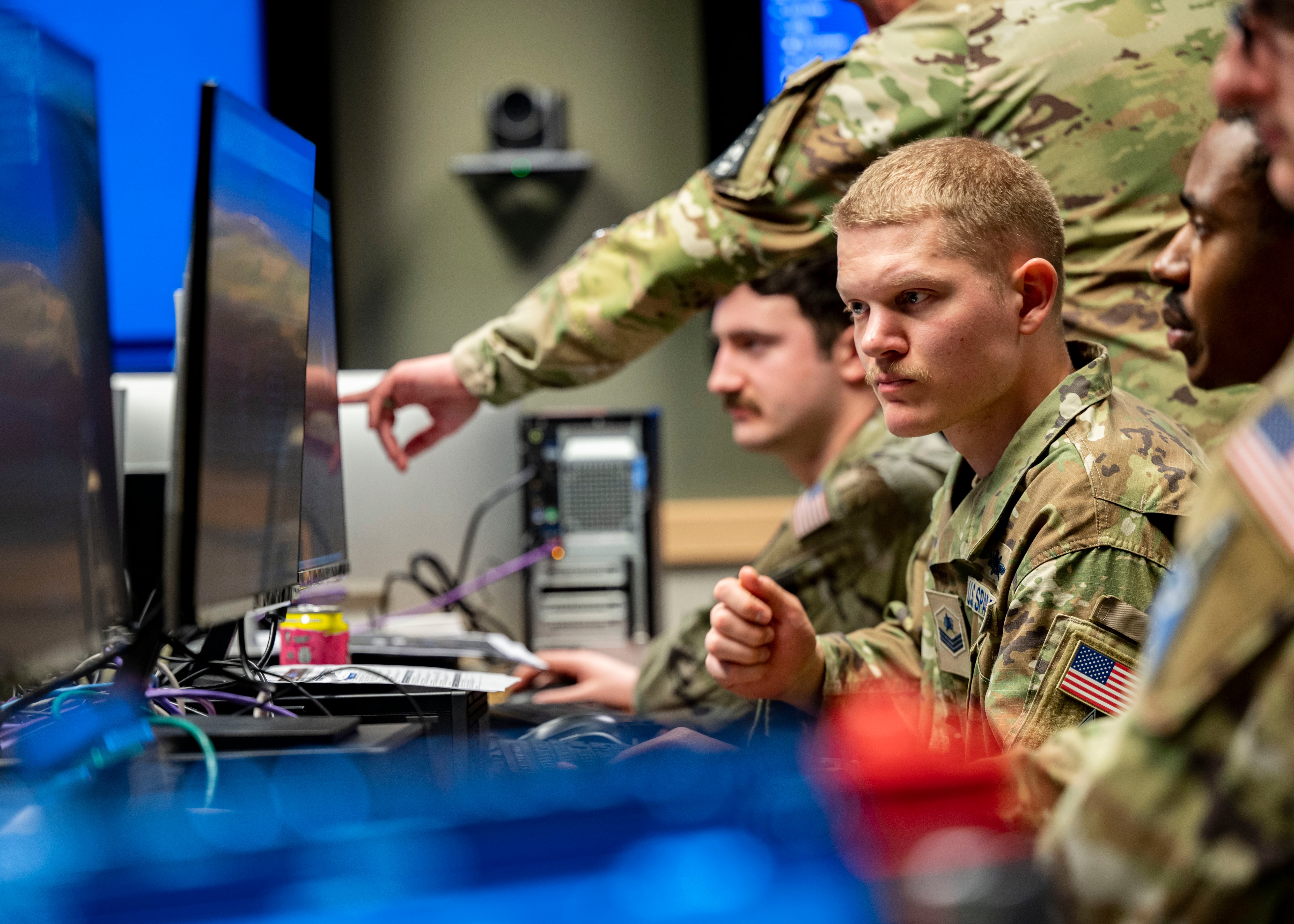The Space Force expects to have a more advanced digital training capability that includes simulated threats available for guardians by the end of this year.
Maj. Gen. Tim Sejba, who leads Space Training and Readiness Command, said Thursday the service has started to use the software in readiness exercises like Space Flag and is working now to upgrade the capability to better simulate the space environment.
“This is basically a digital environment at various classification levels that is going to allow us to be able to provide a red threat,” Sejba said during a Mitchell Institute webinar. “We’re bringing units together at Space Flag already and executing within that digital environment.”
Chief of Space Operations Gen. Chance Saltzman has made readiness a top focus for the Space Force, calling on the organizations that train guardians and develop the supporting infrastructure to move quickly to prepare the force to operate amid heightened threats from China and Russia to U.S. space capabilities.
That focus includes a push to upgrade its existing simulators, which don’t currently meet the service’s training and tactics development needs. In the long term, the Space Force envisions a more robust virtual training infrastructure, but for now, the service is piecing together new and existing systems to try to fill that gap.
The digital training environment Sejba highlighted, called Swarm, is one tool the service has been using in tactical training exercises. Swarm features simulated threats as well as U.S. and allied capabilities — allowing operators to not only train against adversarial tactics but with representative Space Force systems.
Sejba said STARCOM plans to transition Swarm to a cloud-based environment in the next year or two if it has the funding to support the effort. That would allow geographically distributed crews to train together on a more regular basis.
“With the right funding and the amounts of industry focus, we know that we can deliver fairly quickly on some of these things,” Sejba said.
The Space Force’s fiscal 2026 budget request includes $141 million to build out a National Test and Training Complex, which includes virtual capabilities for basic and advanced training. That’s a $40 million decrease from what last year’s budget projected the service would need in fiscal 2026.
Sejba noted that the Space Force is also working to make sure that training requirements are top of mind for program offices charged with developing new satellites and ground systems.
“That’s just part of what the expectation is so that we can get ahead of this as opposed to playing catch-up,” he said.
Courtney Albon is C4ISRNET’s space and emerging technology reporter. She has covered the U.S. military since 2012, with a focus on the Air Force and Space Force. She has reported on some of the Defense Department’s most significant acquisition, budget and policy challenges.





